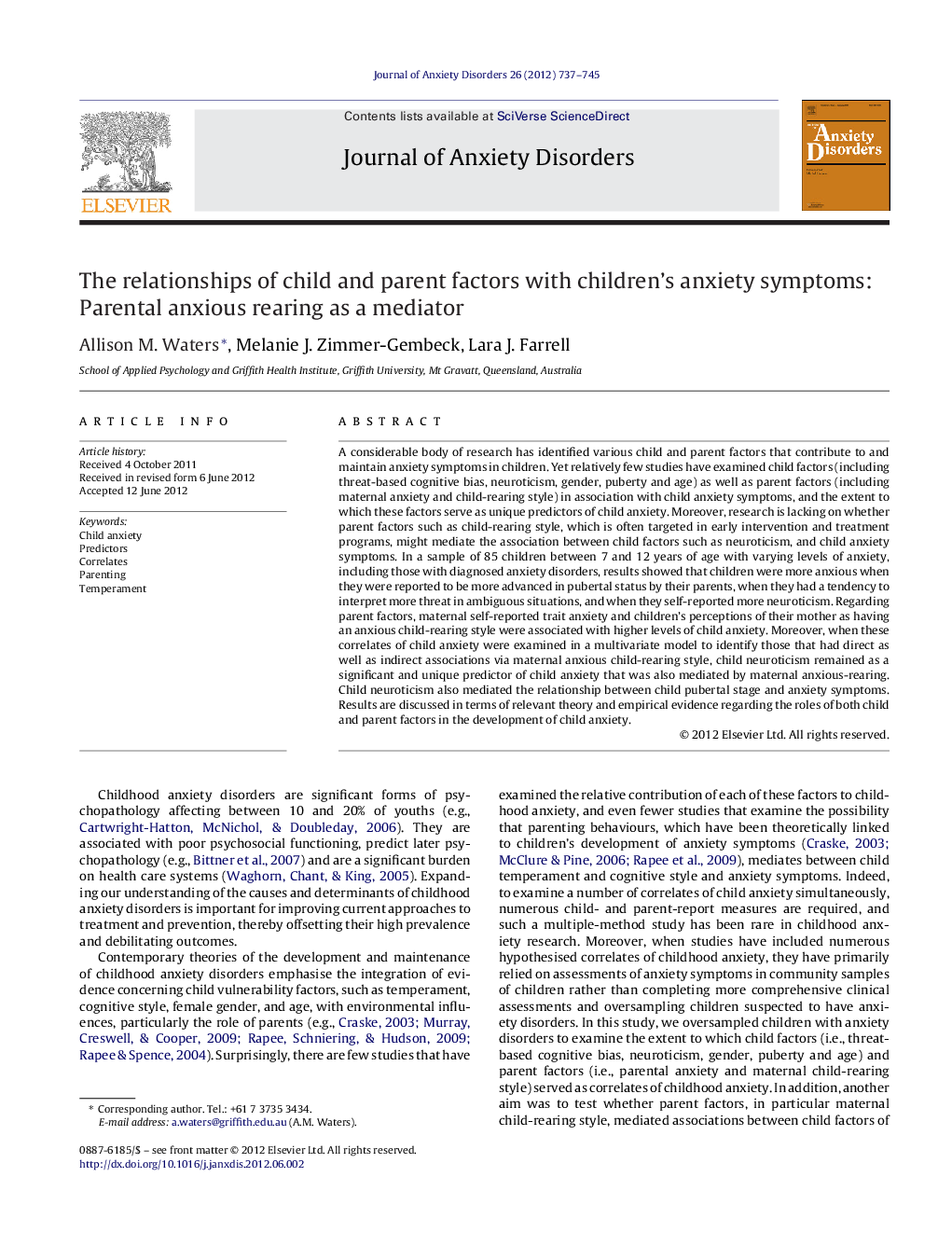| کد مقاله | کد نشریه | سال انتشار | مقاله انگلیسی | نسخه تمام متن |
|---|---|---|---|---|
| 909462 | 917285 | 2012 | 9 صفحه PDF | دانلود رایگان |

A considerable body of research has identified various child and parent factors that contribute to and maintain anxiety symptoms in children. Yet relatively few studies have examined child factors (including threat-based cognitive bias, neuroticism, gender, puberty and age) as well as parent factors (including maternal anxiety and child-rearing style) in association with child anxiety symptoms, and the extent to which these factors serve as unique predictors of child anxiety. Moreover, research is lacking on whether parent factors such as child-rearing style, which is often targeted in early intervention and treatment programs, might mediate the association between child factors such as neuroticism, and child anxiety symptoms. In a sample of 85 children between 7 and 12 years of age with varying levels of anxiety, including those with diagnosed anxiety disorders, results showed that children were more anxious when they were reported to be more advanced in pubertal status by their parents, when they had a tendency to interpret more threat in ambiguous situations, and when they self-reported more neuroticism. Regarding parent factors, maternal self-reported trait anxiety and children's perceptions of their mother as having an anxious child-rearing style were associated with higher levels of child anxiety. Moreover, when these correlates of child anxiety were examined in a multivariate model to identify those that had direct as well as indirect associations via maternal anxious child-rearing style, child neuroticism remained as a significant and unique predictor of child anxiety that was also mediated by maternal anxious-rearing. Child neuroticism also mediated the relationship between child pubertal stage and anxiety symptoms. Results are discussed in terms of relevant theory and empirical evidence regarding the roles of both child and parent factors in the development of child anxiety.
► Child and parent factors contribute to child anxiety symptoms.
► We examine numerous child and parent factors as correlates and predictors of child anxiety.
► Child neuroticism, cognitive bias and pubertal status were associated with higher child anxiety.
► Maternal anxiety and anxious/overprotective parenting were linked to higher child anxiety.
► Maternal anxious parenting and child neuroticism were unique predictors of child anxiety.
Journal: Journal of Anxiety Disorders - Volume 26, Issue 7, October 2012, Pages 737–745